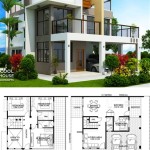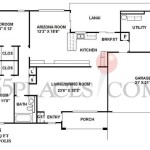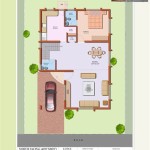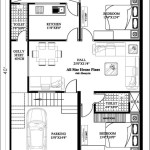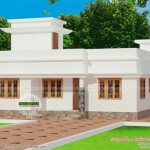House Plans: New Orleans Style
New Orleans boasts a unique architectural heritage, reflecting influences from French, Spanish, Creole, and American cultures. This blend creates distinctive home styles that remain highly sought after today. Whether planning a new build or a renovation, understanding the key features of New Orleans architectural styles can help ensure a design that captures the city's charm.
Key Characteristics of New Orleans House Plans
Several architectural elements define the New Orleans aesthetic. These features, often combined in various ways, contribute to the city's iconic streetscapes.
1. Balconies: Perhaps the most recognizable feature is the wrought-iron or cast-iron balcony. These ornate additions provide shade, ventilation, and a social space overlooking the street below. Balconies can range from small Juliet balconies to expansive wraparound porches.
2. French Doors: Tall French doors, often paired with transom windows, maximize natural light and airflow. These doors typically open onto balconies or patios, blurring the lines between indoor and outdoor living.
3. Courtyards: Many New Orleans homes, particularly those in the French Quarter, feature private courtyards. These secluded outdoor spaces offer respite from the city's hustle and bustle and provide a space for entertaining or relaxing.
4. High Ceilings: High ceilings are another defining feature, promoting air circulation in the warm, humid climate. These ceilings often feature decorative molding and medallions, adding to the home's grandeur.
Popular New Orleans House Styles
Several distinct styles are prevalent throughout New Orleans. Each style offers its own unique charm and reflects a different aspect of the city's history.
1. Creole Townhouse: Characterized by narrow facades, side gabled roofs, and balconies spanning the upper floors, Creole Townhouses are common in the French Quarter. They often feature a carriageway leading to a rear courtyard.
2. Shotgun House: These narrow, rectangular homes are known for their linear layout, with rooms arranged one behind the other. Shotgun houses are an efficient use of space and are a hallmark of many New Orleans neighborhoods.
3. Double Shotgun House: Essentially two shotgun houses joined together by a shared wall, double shotguns offer more living space while maintaining the style's characteristic narrow footprint.
4. Camelback House: Distinguished by a second story set back from the front of the house, camelback homes maximize living space while maintaining a smaller street-facing facade. The second story often contained sleeping quarters.
Considerations for New Orleans Style House Plans
Building or renovating a New Orleans style home requires careful consideration of the local climate and building codes.
1. Elevation: Due to the city's low elevation and susceptibility to flooding, many homes are built on raised foundations or piers.
2. Hurricane Resistance: Building codes incorporate specific requirements for hurricane resistance, including reinforced roofing and shutters.
3. Humidity: Proper ventilation and moisture control are essential in the humid climate. Materials should be chosen for their durability and resistance to moisture damage.
Adapting New Orleans Style for Modern Living
While preserving historical accuracy is important, New Orleans style house plans can be adapted to suit modern lifestyles.
1. Open Floor Plans: Traditional layouts can be modified to create open, flowing spaces while maintaining the architectural integrity of the home.
2. Energy Efficiency: Modern insulation, windows, and HVAC systems can significantly improve energy efficiency without compromising the home's historic charm.
3. Outdoor Living: Expanding outdoor spaces, such as courtyards and balconies, can create seamless transitions between indoor and outdoor living, embracing the New Orleans lifestyle.
Finding New Orleans Style House Plans
Numerous resources are available for those seeking New Orleans style house plans.
1. Architects: Local architects specializing in historic preservation or New Orleans architecture can create custom designs tailored to specific needs and site conditions.
2. Online Plan Resources: Various websites offer pre-designed New Orleans style house plans that can be customized to a degree.
3. Historical Societies: Local historical societies can provide valuable resources and guidance on preserving the architectural integrity of New Orleans homes.
Building in Historic Districts
Building or renovating in a historic district often requires adherence to specific guidelines and approval from local preservation commissions. These regulations aim to protect the architectural heritage of the neighborhood.
1. Design Review: Proposed plans may be subject to review by a local commission to ensure compliance with design guidelines.
2. Material Restrictions: Certain materials and construction methods may be required to maintain historical accuracy.
3. Color Palettes: Historic districts often have approved color palettes for exterior paint schemes.

New Orleans House Plan French Country Mediterranean Old World European Homes Traditional

Traditional Luxury Style House Plan 6900 Baton Rouge

Image Result For New Orleans Style Stilt Homes Floor Plans House Beach

New Orleans Style Double Shot Gun House Design Ideas Pictures 476 Sqm Homestyler

Creole Cottage Floorplan Remove Back Nook And Put W D In Mudroom Make Overall 33x33 Floor Plans House

New Orleans House Plan French Country Mediterranean Old World European Homes Traditional

About Us Creole Design

New Orleans Architecture Fine Homebuilding

Southern House Plans Blueprints Sims

New Orleans House Plan 30044rt Architectural Designs Plans


